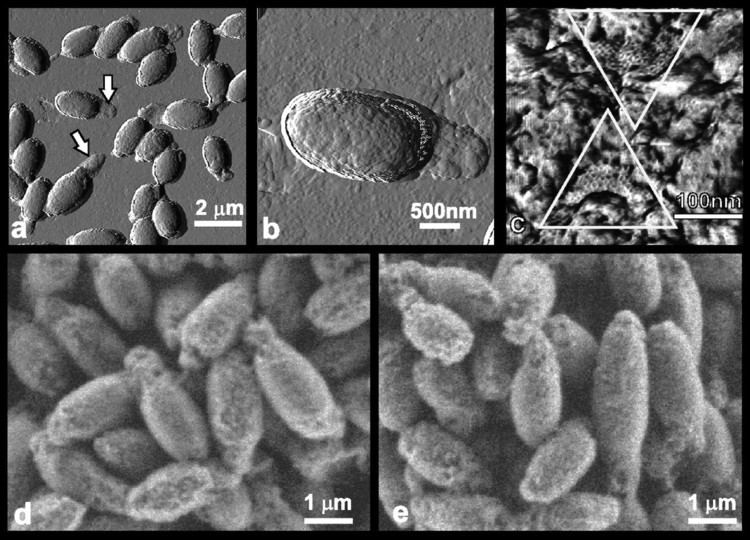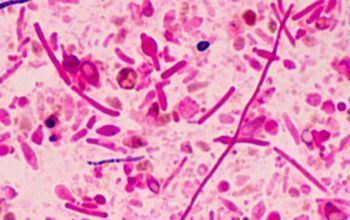Kingdom Bacteria Order Clostridiales Genus Clostridium Higher classification Clostridium | Phylum Firmicutes Family Clostridiaceae Scientific name Clostridium novyi Rank Species | |
 | ||
Similar Clostridium chauvoei, Clostridium sordellii, Clostridia | ||
Clostridium novyi nt as tumor fighting bacteria animation
Clostridium novyi (oedematiens) a Gram-positive, endospore- forming, obligate anaerobic bacteria of the class clostridia. It is ubiquitous, being found in the soil and faeces. It is pathogenic, causing a wide variety of diseases in man and animals. It comes in three types, labelled A, B, and a non-pathogenic type C distinguished by the range of toxins they produce. Some authors include Clostridium haemolyticum as Clostridium novyi type D. C novyi is closely related to Clostridium botulinum types C and D as Yoshimasa Sasaki et al. have demonstrated by 16S rDNA sequence analysis.
Contents
- Clostridium novyi nt as tumor fighting bacteria animation
- Clostridium novyi augmented reality
- Toxins
- Alpha toxin
- Beta Toxin
- Gamma Toxin
- Delta Toxin
- Epsilon Toxin
- Zeta Toxin
- Human diseases
- Tissue penetration
- Epithelial infections
- Animal diseases
- References
Growth in culture proceeds through 3 stages: Initial growth wherein no toxin is produced; vigorous growth wherein toxin is produced; and spore formation wherein endospores are formed and toxin production decreases. It is suggested that type C may be type B that forms spores more readily so does not go through the toxin-production stage.

Isolating and identifying C novyi is difficult due to its extreme anaerobic nature. Commercial kits may not be adequate.
It is also fastidious and difficult to culture, requiring the presence of thiols.
Clostridium novyi augmented reality
Toxins


The alpha-toxin of Clostridium botulinum types C and D, is similar to the C novyi beta-toxin. The A and B toxins of Clostridium difficile show homology with the alpha-toxin of C novyi as does the lethal toxin of clostridium sordellii.
Alpha toxin
The alpha-toxin is characterised as lethal and necrotizing.

The type A alpha-toxin is oedematising. It acts by causing morphological changes to all cell types especially endothelial cells by inhibition of signal transduction pathways, resulting in the breakdown of cytoskeletal structures. The cells of the microvascular system become spherical and the attachments to neighbouring cells are reduced to thin strings. This results in leakage from the capillaries, leading to oedema. The threshold concentration for this action to occur is 5 ng/ml (5 parts per billion) with 50% of cells rounded at 50 ng/ml.
The duodenum is particularly sensitive to the toxin. Injection into dogs resulted in extreme oedema of the submucosal tissues of the duodenum while leaving the stomach uninjured. Injection into the eye resulted in lesions similar to flame haemorrhages found in diabetic retinopathy.The toxin is a large 250-kDa protein the active part of which is the NH2-terminal 551 amino acid fragment. Alpha-toxins are glycosyltransferases, modifying and thereby inactivating different members of the Rho and Ras subfamily of small GTP-binding proteins. C novyi type A alpha-toxin is unique in using UDP-N-acetylglucosamine rather than UDP-glucose as a substrate.Beta-Toxin
The beta-toxin is characterised as haemolytic, necrotizing lecithinase.
Gamma-Toxin
The gamma-toxin is characterised as haemolytic, lecithinase.
Delta-Toxin
The delta-toxin is characterised as oxygen labile haemolysin.
Epsilon-Toxin
The epsilon-toxin is characterised as lecithino-vitelin and thought to be responsible for the pearly layer found in cultures.
Zeta-Toxin
The zeta-toxin is characterised as haemolysin.
Human diseases
The type and severity of the disease caused depends on penetration of the tissues. The epithelium of the alimentary tract, in general, provides an effective barrier to penetration. However, spores may escape from the gut and lodge in any part of the body and result in spontaneous infection should local anaerobic conditions occur.
Tissue penetration
Wound infection by C novyi and many other clostridium species cause gas gangrene Spontaneous infection is mostly associated with predisposing factors of hematologic or colorectal malignancies and with diabetes mellitus, although Gram-negative organisms, including Escherichia coli, may lead to a gas gangrene-like syndrome in diabetic patients. This presents with cellulitis and crepitus, and may be mistaken for gas gangrene. Spontaneous, nontraumatic, or intrinsic infections from a bowel source have been increasingly reported recently.
C novyi has been implicated in mortality among injecting illegal drug users.
Epithelial infections
Symptoms are often non-specific including, colitis, oedematous duodenitis, and fever with somnolence.
Testing is problematical with figures presented by McLauchlin and Brazier [cited above] suggesting a false negative rate of about 40% under ideal conditions. Only positive results may be regarded as reliable. In the absence of a positive test, C. novyi type A may be inferred from characterisation by clinical observation, table 2.
Chronic infection leading to leaky capillaries may also cause retinal haemorrhages and oedema in the lower extremities leading to necrosis and gangrene. Leaky nephrons may compromise the ability of kidneys to concentrate urine leading to frequent urination and dehydration.
Animal diseases
Gas gangrene: Infectious necrotic hepatitis (Black disease)
